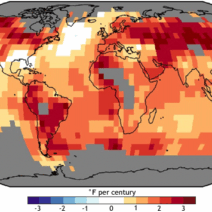Global warming epitomizes one of the greatest challenges of our era, compelling humanity to reevaluate its relationship with the planet’s essential resources. As temperatures rise and weather patterns become increasingly erratic, the strain on our vital resources—water, arable land, and biodiversity—manifests in profound ways. This essay seeks to illuminate the nuanced interconnections between global warming and Earth’s essentials, fostering a deeper understanding of the urgent need for sustainable practices.
The concept of “resources on the edge” invokes a sense of precariousness, an awareness that the foundations of our survival are at risk. The World Bank projects that by 2050, an additional 200 million people may be displaced due to the ramifications of climate change, including water scarcity and inhospitable living conditions. Such statistics evoke a clarion call for societal introspection and proactive measures against the exigencies of global warming.
Water, often heralded as the essence of life, finds itself at the epicenter of climate-induced strain. Increased evaporation rates due to higher temperatures diminish freshwater availability, particularly in regions already beleaguered by aridity. Aquifers, the unseen reservoirs beneath our feet, are rapidly depleting as consumption outpaces natural replenishment. In tandem, glacial melt, which supplies countless rivers and streams globally, is progressing at an alarming rate. The acceleration of ice loss not only threatens water supply but also contributes to rising sea levels, endangering coastal communities everywhere.
Furthermore, the intricate dynamism of the hydrological cycle is being disrupted. Precipitation patterns shift, leading to extreme weather phenomena—droughts that parch the earth, and deluges that inundate communities. This capricious nature of water availability has cascading effects on agriculture, commerce, and everyday life. For instance, agricultural zones, which rely on predictable rainfall, are witnessing diminishing yields, leading to food insecurity and increased prices. In California, the recent droughts have driven farmers to fallow their fields, amplifying the ripple effects on the economy and food supply chains.
Moreover, as we delve into the domain of arable land, the picture becomes equally disconcerting. With climate change influencing soil fertility, the capability of land to sustain crops is diminishing. Erosion, salinization, and increasing extreme weather events contribute to the degradation of this indispensable resource. The Food and Agriculture Organization of the United Nations estimates that 33% of the world’s soils are already degraded, with climate change acting as a catalyst for further deterioration.
The compounding effects of climate change necessitate innovative agricultural practices that prioritize sustainability. Regenerative agriculture, which emphasizes soil health through practices like cover cropping and crop rotation, shows promise. These methods not only enhance soil carbon storage but also fortify the land against climatic variabilities. Embracing such progressive strategies could safeguard food security while simultaneously mitigating climate change impacts.
Transitioning to resilient agricultural systems is imperative, but one cannot overlook the role of biodiversity as a cornerstone of ecological balance. The increasing rate of species extinction attributed to habitat destruction, pollution, and climate change raises alarms across the scientific community. Biodiversity supports ecosystem services, including pollination, pest control, and nutrient cycling. A loss of biodiversity not only endangers the intricate web of life but also jeopardizes human welfare, as many pharmaceutical and agricultural innovations stem from diverse biological sources.
As environmental advocates emphasize the significant dependence on biodiversity, it becomes evident that preserving natural habitats is essential. Initiatives that aim to conserve ecosystems—such as protected areas, wildlife corridors, and reforestation projects—are pivotal in maintaining biodiversity. Additionally, integrating indigenous knowledge and practices can enhance conservation efforts, harnessing a deeper understanding of local ecosystems and their complexities.
Acknowledging the plight of resources on the edge illuminates the interconnectedness of global systems. The interplay between climate change and resource scarcity is not merely a tale of loss; it also offers avenues for innovation and adaptation. Transitioning to renewable energy sources, for instance, not only reduces carbon emissions but also mitigates the strain on energy resources that are vulnerable to climate change. Solar, wind, and hydroelectric power present formidable alternatives that promise energy security while promoting sustainability.
Furthermore, financing green technology and sustainable practices represents a colossal opportunity for economic revitalization. Investment in clean energy, sustainable agriculture, and conservation can stimulate job growth while addressing the dual crises of resource depletion and climate change. Such economic paradigms would benefit not merely the current populace but also future generations, fostering a legacy of environmental stewardship.
As we grapple with the nuances of resources on the edge, it becomes evident that the path to sustainable practices demands collective responsibility. Governments, corporations, and individuals must converge in a concerted effort to mitigate the impacts of global warming. Engaging in local initiatives, supporting sustainable businesses, and advocating for sound environmental policies can catalyze transformative change.
In summation, the stark realities of global warming’s strain on Earth’s essentials unveil both the vulnerability and resilience of our world. Opportunities for innovation abound as we navigate the intersection of climate change and resource management. By shifting our perspective and committing to sustainable practices, we can preserve the vitality of our planet’s resources for generations to come. In this era of uncharted complexities, fostering curiosity about sustainable solutions is imperative in crafting a sustainable future.








